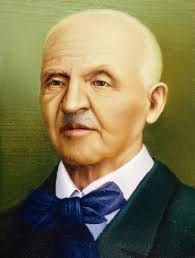The History of “Te Deum in C Major, WAB 45” by Anton Bruckner
Anton Bruckner’s Te Deum in C Major, WAB 45 is one of the most powerful and spiritually charged sacred works of the 19th century. Composed between 1881 and 1884, this monumental setting of the traditional Latin hymn stands as a testament to Bruckner’s deep religious conviction and his mastery of orchestral and choral writing. It is often considered a high point in his sacred oeuvre and a work that encapsulates his unique musical voice—majestic, devout, and awe-inspiring.
Origins and Context
Bruckner began composing the Te Deum in May 1881, during a period of personal triumph and artistic recognition. At the time, he was working on revisions of his earlier symphonies and preparing for performances of his Symphony No. 7, which would soon bring him widespread acclaim. However, even amid his growing fame, Bruckner remained deeply religious, and the Te Deum was written as an expression of his devout Catholic faith.
The initial sketch of the work was completed rather quickly, but the full orchestration took longer, with the final version completed in March 1884. Bruckner later described the Te Deum as “the pride of his life,” and he even famously remarked that, should he die before completing his unfinished Ninth Symphony, this piece could serve as its final movement.
Structure and Musical Features
Bruckner’s Te Deum is written for solo quartet, mixed chorus, full orchestra, and organ ad libitum. The work lasts around 20–25 minutes and is divided into five connected sections:
- Te Deum laudamus – A majestic and powerful opening, introduced by pounding C major chords and a jubilant choral declaration.
- Te ergo quaesumus – A more lyrical and reverent section, showcasing Bruckner’s gift for vocal writing and expressive harmony.
- Aeterna fac – Dramatic and rhythmic, filled with urgent orchestral textures and choral declamation.
- Salvum fac populum tuum – A return to grandeur, blending counterpoint with rich harmonic layering.
- In te, Domine, speravi – A sublime conclusion featuring a soaring solo tenor line and culminating in a radiant affirmation of faith.
Throughout the piece, Bruckner employs his characteristic techniques: massive dynamic contrasts, layered orchestration, and the juxtaposition of solemnity and ecstasy. His use of the organ adds a sacred resonance, while the soloists and choir alternate between intimate supplication and jubilant praise.
Premiere and Reception
The Te Deum received its premiere on May 2, 1885, in Vienna, conducted by Hans Richter. The performance was met with enthusiastic acclaim, and the work quickly gained recognition as one of Bruckner’s most accessible and emotionally gripping compositions.
Even critics who were usually skeptical of Bruckner’s symphonies were impressed by the Te Deum, appreciating its directness and spiritual fervor. The work was performed several times during Bruckner’s lifetime, often with great success, and it was admired by fellow composers, including Gustav Mahler, who held the piece in high regard.
Legacy
Today, Te Deum in C Major is widely regarded as one of the crowning achievements of sacred choral music in the Romantic era. It reflects not only Bruckner’s towering musical intellect but also the profound spiritual depth that permeates all his compositions. While his symphonies are often vast and complex, the Te Deum offers a more concentrated dose of Bruckner’s musical and religious essence.
Its enduring popularity in concert halls and recordings attests to its power to move listeners of all backgrounds. Whether heard in a grand cathedral or a modern concert venue, Bruckner’s Te Deum continues to inspire awe, lifting hearts and minds toward the divine.


Comments are closed